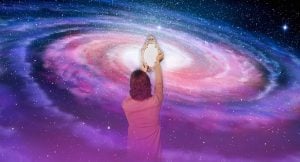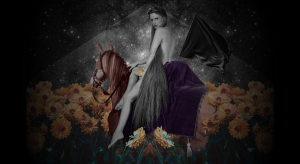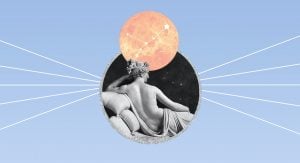Vikings, Shamans, and Sun-Kings: The Pagan Roots of Christmas
It’s the final quarter of the year, a time of honoring endings while simultaneously preparing for new beginnings.
The winter solstice is soon upon us, and with it a tide of holidays and traditions that can feel overwhelming – especially when the stars and planets are naturally pulling us to go inward and find stillness. In fact, the word for solstice comes from the Latin sol sistere, or “sun stands still.”
These days, most of us have lost our way. We’ve lost our connection to the earth, and to the roots of this powerful time, which for pagans long ago symbolized the return of the light after a long (and often dangerous) period of darkness.
THE DAY THE SUN STOOD STILL
Not that long ago, winter was seen as a season of death, of endings, and of going without if the fall harvest wasn’t bountiful. The tradition of lavish winter feasts, abundant gift-giving, and the lighting of bonfires and candles meant much more in the lean wintertimes of yore where food and warmth could be scarce, and when survival was not guaranteed – or ever taken for granted.
Long before Christianity tacked on the story of the Christ child’s birth (originally honored by early Christians in springtime) to the winter solstice and Yuletide, sun-worshiping pagans had dedicated these holidays to honoring the return of the light, and the rebirth of the sun king.
December 25 is the birthday of many sun deities, spanning different cultures and religions worldwide. The later Roman Saturnalia festival was also celebrated at this time, making it convenient for converting pagans to the Christian faith by superimposing new myths onto ancient traditions. Syncretizing these deities and their holidays made it easier to sway the masses towards a new god, and later paving the way for the commercial takeover of the holiday by retail outlets.
STRANGE GIFTS
In this modern era, the commercialization of the Christmas season can lead many people to loathe a holiday that seems to glorify rampant consumerism.
It’s almost as if our ancient survival instincts of stocking up on food and extra reserves of essentials in preparation for the coldest time of the year has been transformed into a crazed shopping frenzy that bolsters a decaying capitalist system.
Yet so many of our traditional Christmastime symbols have pagan roots, from the Christmas tree and evergreen boughs that were sacred to tree-worshipping Vikings, to the origins of Santa Claus.
White-bearded Siberian bear shamans of the arctic regions worshipped the Amanita muscaria mushroom, and would dress in garb mimicking the red and white colors of this hallucinogenic fungus (which, like strange gifts, is also found magically appearing under pine trees). These mushrooms were a favorite treat of the reindeer, who were the spirit animals of these shamans. The reindeer would eat the mushrooms, and the bear shamans would drink the hot reindeer urine, and hallucinate sleighs led by flying reindeer, soaring through the Northern lights.
Keeping the true origins and the real “reason for the season” in mind might help more people feel excited again about the winter holiday, which has long been a multicultural and secular one meant for everyone to enjoy, whether they be nature-revering pagans, Jesus-honoring Christians, or anything (and everything) else.
COME BACK TO YOUR MAGIC
This is a time to be together, to make merry and keep warm, to observe the turning of the seasons, and the cycle of the year. In lighting candles and hearthfires, we keep our inner lights glowing and burning in the cold weather and darkest days. Winter can be a time for magic, and for miracles – if you’re open to making some of your own, and being open to the enchantment that’s being woven all around you.
The comfort and joy most of us have the privilege to experience is a miracle – as is the magic of hot water that comes out of our faucets at will, the warm air that comes out of our heaters, and our full bellies, and the cozy clothes we wear. Ancient people would marvel at the abundance of our winters, at how little we have to fear, and how much we have to be thankful for. What more could we ask for? That magic is rarely found in a store.
Whether your Christmas Eve finds you dancing naked around a fire, breathing in frankincense at midnight Mass, or honoring any other spiritual or secular tradition – find a way back to your own magic, to whatever version of sacredness that resonates for you.
Get your people together, and be with your family if it feels good – and keep it simple this year.
Make time for some stillness. Light your fires, locate your sense of wonder, and keep both going strong through this wintertime.
Get 5 minutes Astrologer chat for $1. Connect now.



